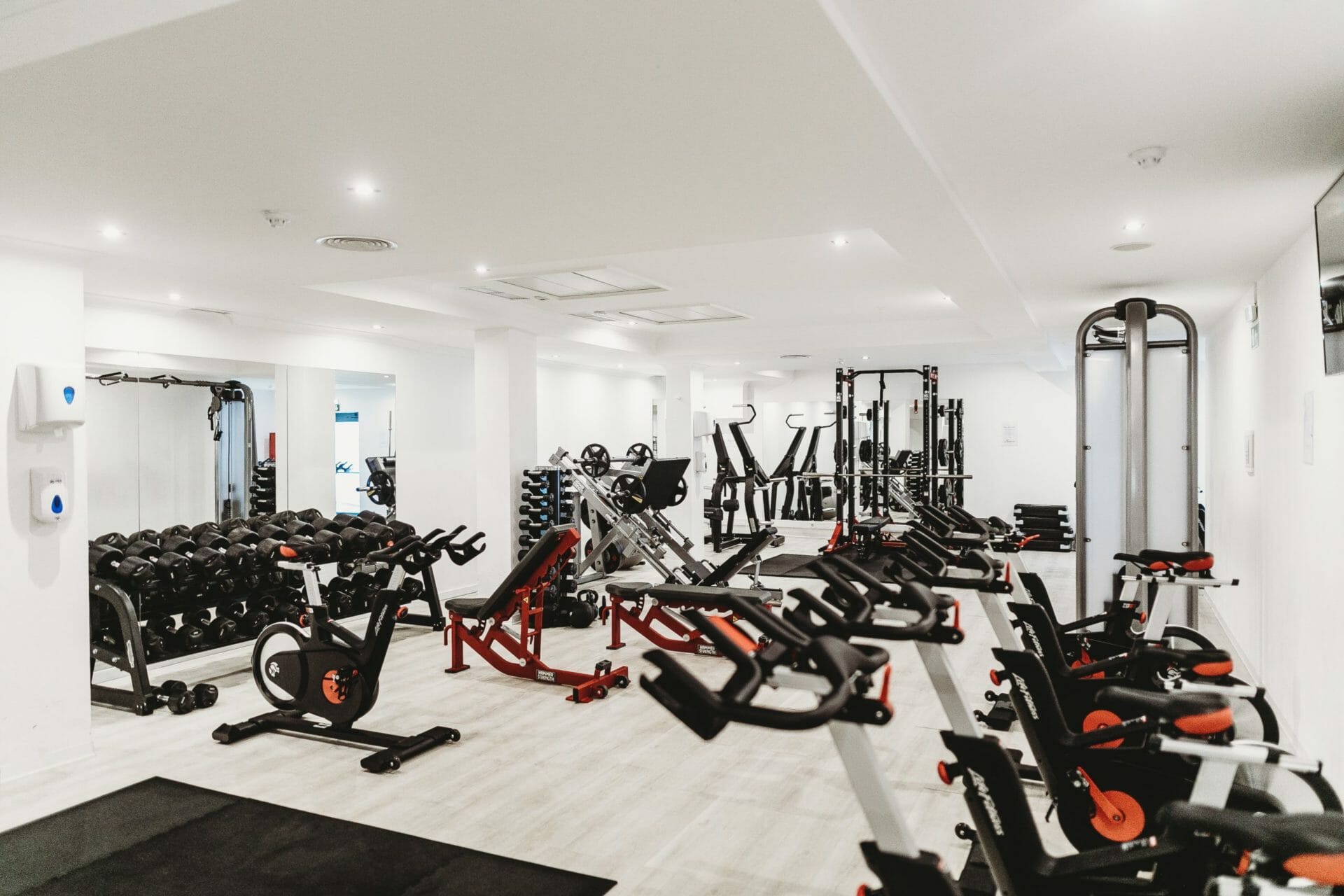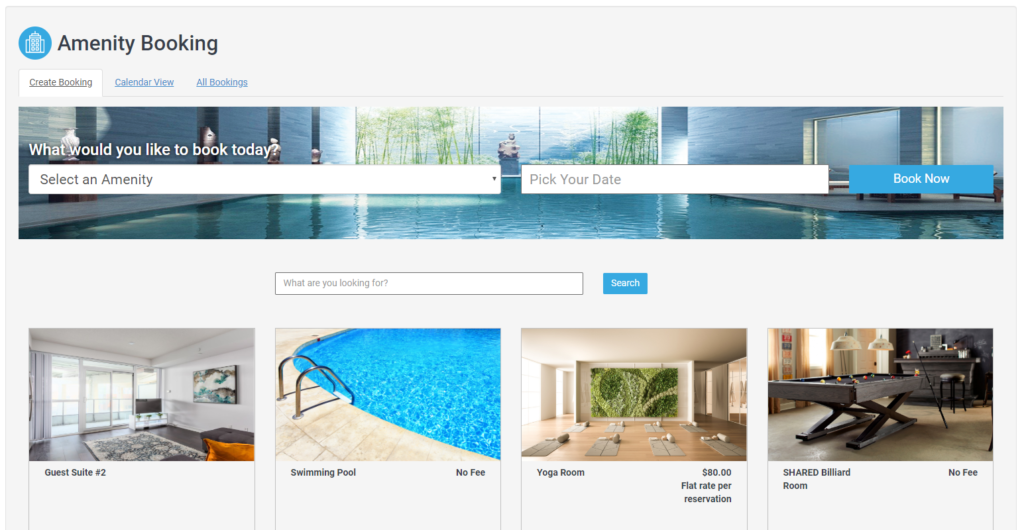Condos and HOAs across North America are having to make some tough decisions about whether they should open shared facilities. After the unprecedented COVID-19 outbreak, multi-residential communities were strongly encouraged to shut down all nonessential amenities, including gyms and pools.
Now that stay-at-home orders are being lifted and restrictions are being loosened, some associations do have the option to reopen shared facilities.
While we all want to be able to enjoy the clubhouse, outdoor patio, or party room again, condos and HOAs must proceed with caution if they are leaning towards reopening their amenities. Communities will not be able to use the facilities in the same manner that they did before COVID-19, and boards have a responsibility to help ensure that everyone stays safe and healthy. While it is impossible to guarantee that an amenity is free of the virus, there are things that communities can do to facilitate safer usage of shared amenities.
Make sure you can reopen
First and foremost, you must comply with all government rules and regulations regarding COVID-19. The rules are different depending on where you live, so there may be limitations on what can be reopened, and how each facility can be used. There may be no specific rules about HOA or condo amenities; look to rules and regulations designed for public facilities (pools, tennis courts, gyms, community centres, etc.). If government orders are not clear or don’t say anything about reopening certain facilities, then amenity openings should be delayed. You don’t want to end up in a legal dispute where you must explain to a judge why the association opened the gym when your county was still under lockdown.
Note that most states and provinces are reopening in phases, and a similar strategy is recommended for multi-residential communities. Instead of opening all of your amenities at the same time, consider opening the amenities that pose a lower risk of spreading the coronavirus, first.
Create detailed plans before you open anything
Boards should have a safety plan that aligns with local regulations provided by health and community officials. That plan should address how each amenity is to be used by residents, what rules and restrictions will be implemented, who will be responsible for enforcing the rules, cleaning routines, and what happens if someone who has used the facility finds out that they have contracted COVID-19. That way, you can take immediate, proactive measures instead of taking a reactive approach.
Have the association’s legal counsel review the plans to ensure that you aren’t taking any unnecessary risks, and that the plans can be carried out.
Put plans in writing
Once your plans have been approved, they need to be put into writing so that the entire community can read and process them. Help set your entire community up for success by providing them with all of the information they need to practice safe habits when using the shared amenities. We recommend sharing plans, rules, regulations, processes, and best practices in a location where everyone will be able to review this information. That may be through email, on an online file library, a community website, or a resident portal. You may also decide to print and distribute documents if your community is not comfortable accessing information online.
Residents need to know that the association cannot guarantee that no one will get sick, or that the facilities are free of the virus. Disclaimer signs should be posted in or near the amenities so that residents understand the risk they are taking. Transparency and communication will continue to be extremely important as we move forward and try to return to a new normal.
Establish safer environments
These strategies can help to keep your community safer. You should customize strategies based on the unique needs of your residents and your property. You may need to change or alter strategies as the association can assess what is and what is not working.
Create a schedule using an amenity booking system
You cannot open your gym, party room, or tennis court and welcome everyone back in, at least not all at once. Capacity may need to be cut in half and hours may need to be reduced so that people can maintain a safe distance from each other and effective cleaning routines can be performed. But how do you implement these restrictions while still giving residents a fair opportunity to use the facilities? An amenity booking system could be the ideal solution.
Condo Control Central’s Amenity Booking feature gives residents the ability to book timeslots for shared amenities. They can do everything online from their computer, or download the app and book from their phone. Reservation lists can be displayed in each shared space, meaning residents can essentially manage themselves.
Using our booking feature, management can control:
- Which amenities are available for booking/using
- Hours of operation
- Maximum booking length
- Maximum spots available at one time
- How often a unit or resident can book a specific amenity
- How many people can use a space if the amenity is a party room or outdoor area
Management can also update terms and conditions for each amenity, and require residents to sign an online agreement before they book the amenity. Including an online agreement is an excellent idea because it allows residents to look at the rules and expectations for the specific amenity they are requesting to use.
This online booking feature was helpful for managing amenities like guest suites, elevator bookings and party rooms before COVID-19, and now associations can use this tool to safely manage all shared amenities. That includes facilities like laundry rooms. Residents can even make payments online so that they do not have to go to the lobby or management office to make a physical payment.
So, if your community isn’t too large, you could use the feature to create a couple of timeslots for your gym for each hour from 9 am until 8 pm, as an example. You can make it so residents can only sign up for one spot each day. Once you’ve set up the timeslots, the residents have the freedom to book the timeslot that works best for them.
Create space
Making sure that all community members follow the new rules will be a bit of a challenge. Not every HOA or condo has the resources to assign a supervisor or staff member to monitor each amenity. To encourage residents to keep their distance, the association may have to remove or disable every other cardio machine or put tape on the pool deck to let owners know where they can safely sit or stand.
Do what you can to encourage people to remain six feet apart. Some condos have even placed tape on their elevator floors to help residents maintain a safe distance.
Conduct routine cleaning
This goes without saying, but cleaning routines will need to be amplified. Most associations have not budgeted for additional cleaning costs, but this is a cost that must be accepted if you are going to move forward with opening non-essential amenities. Frequently touched surfaces are most likely to be contaminated, which is why they need to be disinfected often. The CDC has reported that there is no evidence that COVID-19 can spread to people through the water in pools, hot tubs, spas, or water play areas, however proper maintenance (including disinfection with chlorine and bromine) is crucial.
Ensure cleaning staff have been given detailed instructions about how to take care of each space. Cleaning should be performed at least twice a day with effective cleaning materials, and staff should be given protective equipment to ensure their safety.
As always, encourage and support proper handwashing by keeping washroom facilities stocked with soap and paper towels. Staff and residents should be washing their hands frequently, and anyone who is feeling unwell should stay home.
Continue to monitor the situation, and be prepared to make changes
We are all hoping to experience a smooth transition as businesses and shared spaces slowly start to reopen. However, there is a chance that we will have to make some quick adjustments if there is another surge in COVID cases.
The best thing you can do is follow instructions provided by reputable officials, and monitor your own community. If you do decide to reopen non-essential amenities, consider hiring additional security guards or employees to monitor social distancing. If homeowners begin to violate social distancing rules, you may have to shut facilities down. People won’t be happy about it, but right now, health and safety are more important.



